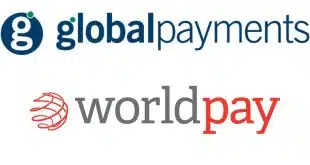By Rick Oglesby, Double Diamond Payments Research
With Apple Pay now confirmed to launch on Monday, we are closer to seeing the impact it will have on mobile-payments acceptance, technologies, and standards.
In the meantime, much of the debate concerning Apple Inc.’s payments venture has missed a crucial point. While the discussion has centered on whether Apple Pay will energize mobile payments and the ecosystem for near-field communication (NFC), it is far more important to consider that Apple Pay is merely a component of Apple’s Passbook app, and then to evaluate what the Apple Pay/Passbook combination could mean for the future of payments.
At first glance, it appears that Apple has positioned itself in alignment with the rest of the payments ecosystem to reinvigorate mobile payments. However, in the greater Passbook context you can see that, by positioning itself alongside the payments ecosystem, Apple has greatly bolstered its potential as a payments disruptor.
The key is Passbook. Through Apple Pay, Apple has incorporated the major payment brands and the largest issuers into Passbook, thereby legitimizing Passbook as a wallet. Apple and its payments-network and financial-institution partners have already begun to aggressively promote Apple Pay in an effort to make Passbook a central payments decision point for consumers.
Passbook will also be an open wallet, including not only Visa, MasterCard, and American Express, but also Discover, PayPal, CurrentC (MCX), Starbucks, Square, LevelUp, and Softcard, plus any other developer that wishes to add payment credentials, loyalty cards, coupons, vouchers, Groupons, tickets, etc. Apple is simultaneously taking a multi-technology approach to payments, enabling not only NFC for the card networks, but also barcode and Bluetooth low energy (BLE) for anyone else that wants to use them.
At the same time, independent of its work with the payments ecosystem, Apple continues to build its BLE and iBeacon technologies. For merchants, these solutions enable geolocation-based consumer messaging intended to drive change in consumer behavior in-store and at the time of purchase. This will give merchants a direct, digital line of communication to consumers as they approach the point of sale, and hand them every opportunity to digitally influence the consumer’s shopping and payment behavior.
What does this mean? The open wallet means that anyone can compete for consumer attention within Passbook. The multi-technology approach means that those competing for consumer attention within Passbook will have a selection of technologies with which to pass information to merchants.
If the payment networks and financial institutions select NFC, then Apple is good with that. If MCX chooses barcodes, Apple is good with that, too. And if Square or LevelUp chooses BLE, that too is fine with Apple. Most important, the iBeacon-to-Passbook link means that merchants will finally have what they have long sought: a way to influence consumer payments behavior, and therefore a way to force greater payments-network competition.
For example, MCX and its participating merchants hope to create a solution that is competitive with the traditional networks, so MCX could outright reject Apple Pay and NFC while embracing Passbook and offering a competitive solution that is enabled for barcode and/or Bluetooth and available within Passbook. The MCX payment card would appear in Passbook alongside the consumer’s Visa, MasterCard, and/or AmEx cards. But merchants would be able to specifically incent MCX checkouts through iBeacon-driven messages and offers, while the payments networks and issuers sit idly in the background.
In this scenario, the payments networks miss the ability to target MCX customers, but Apple still wins as the enabler of MCX and its CurrentC solution. Even more important, by enabling automated clearing house payments, digital currencies, or other alternative payments within Apple Pay, Apple can provide a wealth of funding-mechanism choices for consumers, merchants, and developers alike, ultimately winning the mobile-payments game at every level.
In fact, Apple has positioned itself as the central hub through which consumers and merchants find each other, negotiate purchases, negotiate payment terms and payment vehicles, and complete transactions. So before you celebrate Apple’s efforts to partner with the existing payments ecosystem, consider Apple’s alternatives and position in the market. By positioning itself in alignment with the existing payments ecosystem, it has greatly increased its potential as a future payments disruptor.
The fox is now in the henhouse, and the only question left is, “How hungry is he?”
Rick Oglesby is senior analyst/consultant at Double Diamond Payments Research, Centennial, Colo.





